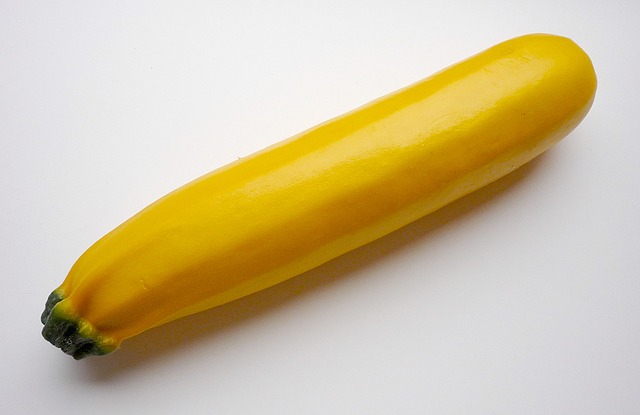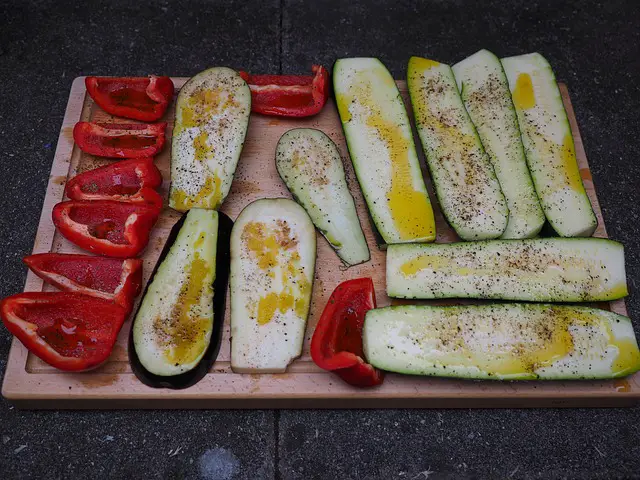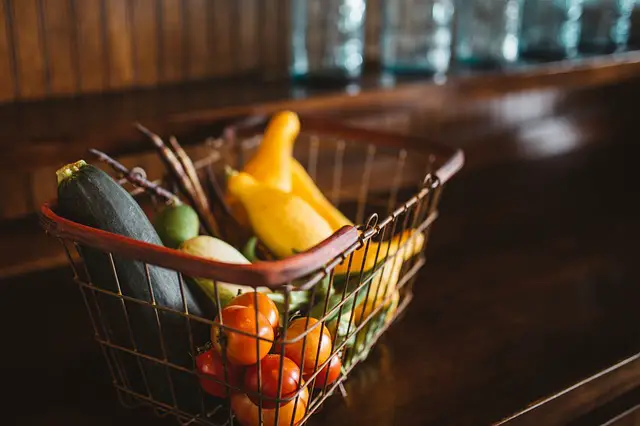What Is Zucchini?
Zucchini is much like a green, less flavorful summer squash. You may even understand it like a “courgette,” based on your location.
This squash is sturdy and grows easily in many surroundings, and has a wide range of uses, from nice zucchini bread to natural “pasta” produced from pieces.
Zucchini squash (courgette) is among the most famous summer squashes in America and Europe. As in gourds, it goes within the Cucurbitaceae (Cucurbita pepo) family of vegetables.
Summer squashes originated in Mexico and the Central America. A number of cultivars of summer squash are grown during warmer, frost-free seasons throughout America.
Actually, zucchini is formed with natural skin which will be mottled with bright areas, like sausages. The squash includes a moderate taste that will be possibly best known as “springlike” with a sharp feel when natural.
Zucchini is a universal food item. They can be eaten raw or cooked and can be eaten completely without wasting a bit. It could be cooked or roasted with additional greens, used in curries and stews, put into pasta sauces, and thrown in stir-fries.
Zucchini, besides having high nutritional value, has a number of useful properties and health benefits.
The benefits of zucchini squash are many, especially if they are grown without the use of synthetic fertilizers.
Some popular varieties of Zucchini:
√ Golden zucchini
√ Round varieties
√ Limelight zucchini
√ Tatume
√ Costata romanesco (cocozelle)
√ Yellow crooknecks
Zucchini is accessible all the entire year; nevertheless, they’re at their greatest during late spring and summer seasons.

Nutrition Facts and Health Benefits of Zucchini
Zucchini has a good taste and dietary qualities and is easily digestible. It includes carbohydrates and vitamins B 1, B 2, C, nicotinic acid, and carotene.
The seeds of zucchini contain large amounts of protein and vitamin E. When ripe, fruit sugar and carotene in them increases.
Zucchini helps to improve digestion and excretion of harmful substances. They are especially useful to the liver.
Summer squash is 95 percent water, which makes it low in calories as well as an excellent alternative if you’re interested in losing weight.
A moderate zucchini, for instance, includes only 33 calories. It provides 1 gram of protein and less than 1 gram of fat.
The same size zucchini includes 6 grams of carbohydrates, 2 grams of which are dietary fiber. (1)
Low-glycemic food
Zucchini is a low-glycemic food that won’t spike your blood sugar, but will supply your system with a steady supply of glucose.
Potassium
Zucchini is a good source of potassium, using a moderate vegetable providing 11 percent of your day-to-day needs, or 512 milligrams. The American diet is often higher in sodium than potassium, which results in high blood pressure.
Low-calorie vegetable
Zucchini is among the low-calorie vegetables; it supplies 17 calories per 100 g. There is no presence of saturated fats or cholesterol. Its rind is great source of dietary fiber that helps to reduce constipation.(2)
Antioxidants
Vitamins and minerals in zucchini have antioxidant properties.
Antioxidants protect against:
√ aging
√ cancer and disease (3)
Antioxidants help support:
√ coordination
√ memory function (4)
Vitamin C
One normal serving of zucchini contains 28 % of the daily recommended value of vitamin C.
Vitamin C is:
√ good against infectious agents
√ good for the immune system
√ promotes healing
√ helps to cope with stress (5)
Riboflavin (Vitamin B2)
Zucchini contains 8 % of the daily recommended value of riboflavin.
Riboflavin (vitamin b2) is important because:
√ it gives energy to your metabolism
√ protect the body from free radicals (6)
Manganese
One normal serving of zucchini contains 9 % of the daily recommended value of manganese.
And manganese:
√ has an important role in the normal functioning of the nervous system
√ helps break down proteins and fat
√ helps to keep bones strong (7)
Phyto-nutrients
Phyto-nutrients are substances produced by some plants and believed to promote health like slow the aging process or reduce a risk of certain diseases.
According to USDA national nutrient database Zucchini contains 120 µg of Carotene-ß and 2125 µg of Lutein-zeaxanthin.
Carotene-ß (beta-Carotene, carotenoids):
√ Lowers risks of some cancer
√ Maintains a healthy heart
√ Promotes memory function
√ Helps in urinary tract health (8) (9)
Lutein-zeaxanthin:
√ Lowers risk of some cancers
√ Maintains vision health
√ Protects against birth defects
√ Keeps blood cells, bones and teeth strong (10) (11)
Zucchini Recipe: Creamy Zucchini Soup
Flavorful Zucchini: It Can Be Done
Unlike summer squash, zucchini lightly steamed with a little butter doesn’t come out buttery and delicious. Instead, it’s watery, with a little weak flavor and not much else.
But zucchini doesn’t have to be the green sheep of the squash family. The trick to cooking zucchini that tastes good is to watch what you cook it with.
Precisely because it has so little flavor of its own, it absorbs other flavors like a crisp green sponge. When cooked in a stir-fry with a little soy sauce and some brown sugar and ginger, it absorbs all these flavors and becomes easily the tastiest part of the stir-fry.

To cook zucchini in a stir-fry, it should be very lightly rinsed before you cut it. Cubing it then rinsing it will result in the zucchini holding even more water—definitely something to avoid.
Rinse it lightly, then cut off the ends. If you like, you can peel it; a paring knife works better than a potato peeler for this. But it doesn’t have to be peeled at all; the skin will cook up quite nicely in the stir-fry.
Cut it into slices about half an inch thick. Then divide each slice into four sections. (Stack several slices on top of each other and use a large, sharp chef’s knife to make the process go faster.)
A single large zucchini will make a stir-fry large enough to feed four people easily when other ingredients are added.
Saute onions and garlic in a little canola oil. If you prefer, peanut or sesame oil adds a “genuine Oriental” flavor. However, canola oil is much healthier for your heart and arteries, and the difference in flavor is minimal.
Add the zucchini and allow it to brown lightly. Add roughly two cups of chopped cabbage, and turn the heat down to medium or medium-low.
If you like, add a handful of chopped Swiss chard once the cabbage is just becoming soft. Be careful not to cook the chard too long, or it will become bitter.
As you add the chard, add about three tablespoons of soy sauce, one tablespoon of brown sugar, and an eighth of a teaspoon of ginger. Continue to stir vigorously until the chard is lightly wilted, the zucchini is soft, and the cabbage is pliable.
Remove the stir-fry from heat and serve over rice. The zucchini will have absorbed flavors of garlic and onion, soy sauce, ginger and canola oil.
It will, in short, be absolutely delicious and simply bursting with flavor.
Researches and references
(1) http://nutritiondata.self.com/facts/vegetables-and-vegetable-products/2639/2
(2) http://www.hsph.harvard.edu/nutritionsource/carbohydrates/fiber/
(3) http://www.ncbi.nlm.nih.gov/pubmed/7697981
(4) http://onlinelibrary.wiley.com/doi/10.1016/0307-4412%2894%2900097-9/pdf
(5) http://lpi.oregonstate.edu/mic/vitamins/vitamin-C
(6) http://ajcn.nutrition.org/content/77/6/1352.full
(7) https://umm.edu/health/medical/altmed/supplement/manganese
(8) http://www.ncbi.nlm.nih.gov/pubmed/12226001
(9) https://www.nlm.nih.gov/medlineplus/druginfo/natural/999.html
(10) https://nei.nih.gov/news/pressreleases/050513
(11) http://ajcn.nutrition.org/content/87/6/1837.full
Leave Feedback: Was this article helpful?

